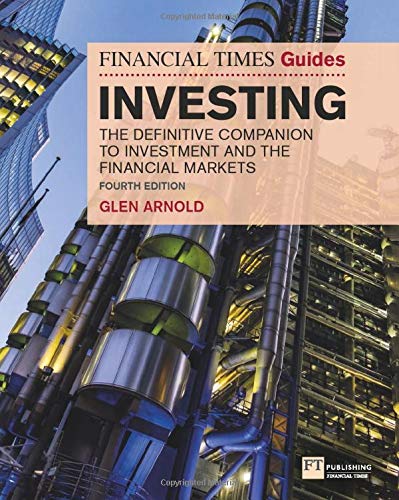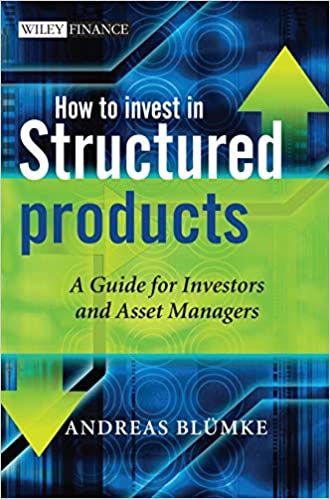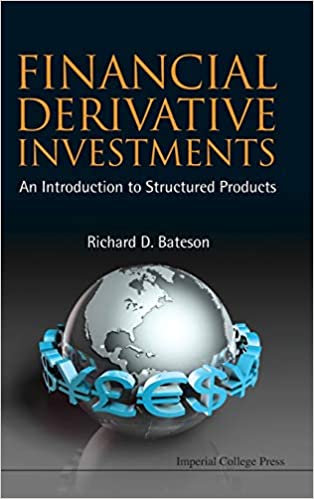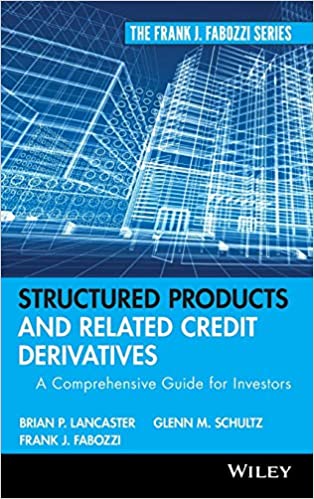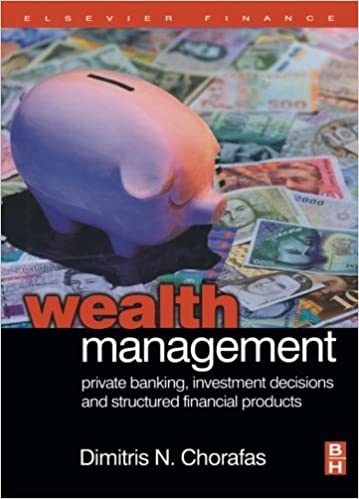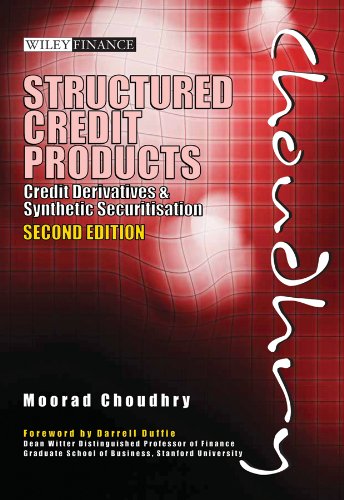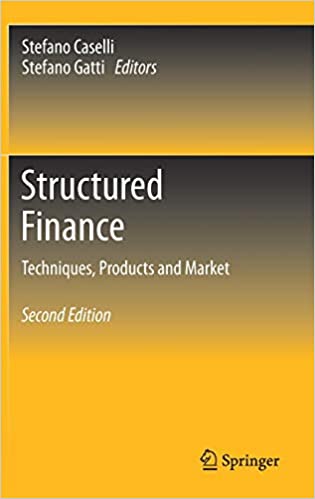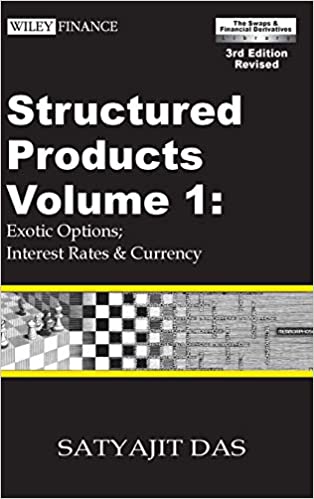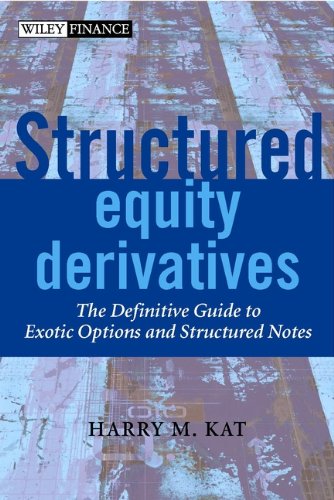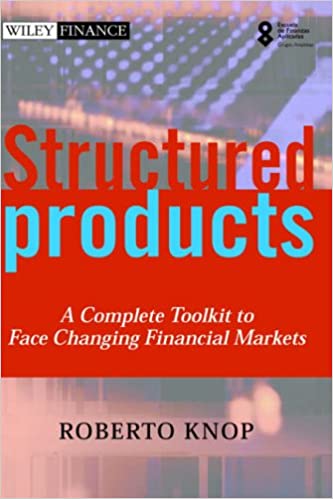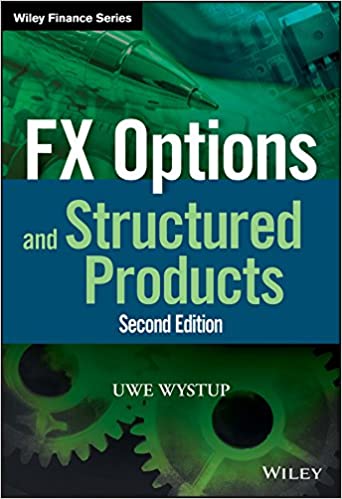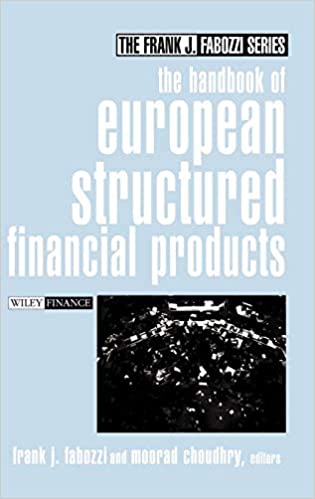Last updated: 20 December 2021. This page brings together the best structured products books that finance authors have ever written. It includes my favourite 5 titles of all time, as well as a few other useful shortlists of structured products or related books that I think you'll find of interest.
The best books about structured products
All books featured are beginner friendly and don't assume much prior knowledge. With prices ranging from £9 - £80, stocking up on a few of the best structured products books can deliver the same value as an expensive seminar for only a fraction of the cost. They can even be read for free with Amazon's Kindle Unlimited free trial.
Click on any title below to see the latest price from Amazon, you'll be shocked at how affordable the most popular titles are. As an Amazon Associate, I earn a small commission from qualifying purchases which helps to support this site. This does not impact how I compile the list. Happy reading!
Discover prime books on investing and finance
No boundaries, just your curiosity- Invest with confidence
- Finance industries
- Real estate & real assets
- Exotic investments
- The bigger picture
Books reviewed
Financial Expert 2024 Book Awards
Gold Prize
Financial Times Guides: Investing by Glen Arnold
Structured products books for beginners and investors
Comprehensive introductions to this exciting and complex asset classStructured products books for finance professionals
The science and innerworkings of structured products, explained for professionalsDownload all these investing books for free with Kindle Unlimited
You DON'T even need a Kindle device to download booksHere's a useful tip that will save you £100+ on structured products books. Sign-up to Amazon's Kindle Unlimited free trial, which offers access to all titles for free for 30 days.
- There's no obligation to continue with a paid subscription.
- You don't even need a Kindle to enjoy - any device will do.
If you're cost-savvy, you'll already be calculating the savings you could unlock and the knowledge you could gain by downloading 5 books over the next 30 days.
My Top 5 Structured Products Books for 2022
Click covers to see latest reviews and prices1. How to Invest in Structured Products - Andreas Bluemke
Financial Expert Rating:
Synopsis:
"This book is essential in understanding, investing and risk managing the holy grail of investments - structured products.
Key features include:
- A comprehensive list of factors an investor needs to take into consideration before investing. This makes it a great help to any buyer of structured products;
- Unbiased advice on product investments across several asset classes: equities, fixed income, foreign exchange and commodities;
- Guidance on how to implement structured products in a portfolio context;
- A comprehensive questionnaire that will help investors to define their own investment preferences, allowing for a greater precision when facing investment decisions;
- An original approach determining the typical distribution of returns for major product types, essential for product classification and optimal portfolio implementation purposes;
- Written in a fresh, clear and understandable style, with many figures illustrating the products and very little mathematics."
Who this book is for:
A comprehensive guide for investors who are serious about immersing themselves in structured product investments, either as part of a larger portfolio, or for a separate smaller lump sum.
The book begins by introducing structured products by way of a basic guide so that readers will be able to understand a payoff graphic, read a termsheet or assess a payoff formula, before moving on to the key asset classes and their peculiarities.
Readers will then move on to the more advanced subjects such as structured products construction and behaviour during their lifetime. It also explains how to avoid important pitfalls in products across all asset classes, pitfalls that have led to huge losses over recent years, including detailed coverage of counterparty risk, the fall of Lehman Brothers and other key aspects of the financial crisis related to structured products.
The second part of the book presents an original approach to implementing structured products in a portfolio.
How to Invest in Structured Products is currently rated 4.3/5 on Amazon, and is my top pick.
Synopsis:
"Structured products are sold to a wide range of retail, high net worth and institutional investors, with over £15bn of structured investments sold in the UK in 2009.
Based on a non-specialist graduate lecture course given at University College London (UCL), this book provides an invaluable introduction to the fast growing world of derivative investments and the technology used in their design, pricing and structuring.
The book gives a comprehensive overview of structuring and trading products based on the author's extensive international experience in structuring investment products across a range of underlying asset classes, including equities, interest rates, credit and hybrids.
The product coverage ranges from equity investments such as reverse convertibles and basket correlation products, to credit products such as first-to-default notes and the notorious “CDO2”.
Who this book is for:
As it is written in a simple and accessible manner, the author expects that this book will be of interest to students, bankers, investors and other finance professionals.
Financial Derivative Instruments, by Richard D Bateson, has managed to pitch this book at exactly the right level for investors.
To often, a finance book is either:
a) too basic, and leaves investors hungry for more detail about the large investment they're about to make.
b) too technical, assuming too much knowledge for a non-expert to be able to understand.
However this book gets the pitch just right - offering enough insights to give investors all the information they could ever need, with an accessible tone. A great read.
Financial Expert Rating:
Synopsis:
"This book has two themes: Private Banking and investment decisions regarding Structural Financial Products.
Dr. Dimitris Chorafas examines in a rigorous way whether structured financial products are advisable investments for retail and institutional investors and, if yes, which risks they entail.
Both institutional and retail investors are being offered by the banks they work with structured products.
The book examines structured financial products, their polyvalent nature, and the results which could be expected from them."
Who this book is for:
Wealth Management: Private Banking, Investment Decisions, and Structured Financial Products is an excellent (if underrated) text written by Dimitris N. Chorafas.
Having personally owned this book, I can attest to the usefulness of his perspectives of structured products, particularly in the context of investment portfolios for moderate to large private investors.
This is a wealth management perspective, and therefore asks questions from the perspective of a financial adviser, wealth management or private banking manager.
"Do structured products make sense?"#
"Does the science prove that structured products would add incremental value to a portfolio?"
Financial Expert Rating:
Synopsis:
"Updated coverage of structured credit products with in-depth coverage of the latest developments
Structured credit products are one of today's fastest growing investment and risk management mechanisms, and a focus of innovation and creativity in the capital markets.
The building blocks of these products are credit derivatives, which are among the most widely used products in finance. This book offers a succinct and focused description of the main credit derivative instruments, as well as the more complex products such as synthetic collateralized debt obligations.
This new edition features updated case studies from Europe and Asia, the latest developments in synthetic structures, the impact of the subprime meltdown, along with models and teaching aids.
Moorad Choudhry returns with this excellent update of the credit derivatives market. The second edition of his classic work is, like the subject matter itself, at the forefront of the financial industry. It deserves a wide readership."
Who this book is for:
Structured Credit Products by Moorad Choudhry - a Treasury chief who works for Europe Arab Bank plc in the UK. He's also a visiting professor at London Metropolitan University.
Have a look at what others have to say about this book:
"This is THE book for credit derivative trading. From first steps to advanced trading strategies, this is invaluable. Well written and insightful, perfect for ad hoc reference or reading cover to cover."
—Andrew Benson
ETF Market Making, KBC Peel Hunt, London
"Professor Choudhry has inspired me to really get into credit derivatives. It’s great to be lectured by someone with such energy and practical hands-on experience, as well as the ability to get stuck into the details."
—George Whicheloe
Equity-Linked Technology, Merrill Lynch, London
Financial Expert Rating:
Synopsis:
"Although the pricing and hedging of derivatives contracts has been the subject of a large number of books, hardly any books exist on the actual design of derivatives contracts. Structured Equity Derivatives fills this gap in a remarkable way.
The book introduces an approach to the structuring and practical application of derivatives that allows the reader to create his own derivatives solutions to an endless variety of problems. The approach is extremely natural - the only limit is the reader's own creativity."
Who this book is for:
This is a brilliant book for finance professionals looking to understand more about structured products and equity derivatives such as options and structured notes.
Since it clearly explains the reasons why derivatives exist and why there is such a large variety, this is the book that should be read before picking up any other book on the pricing and hedging of derivatives.
As the book concentrates on product design instead of pricing, there are no complex pricing formulas or numerical procedures. The emphasis is on intuition and common sense rather than complex formal results, which makes the book accessible to people from many different backgrounds.
What risks do structured products contain?
Risk comes from not knowing what you're doing."
1. Capital loss
Because the terms and conditions of each product may vary, some structured products will offer more capital protection than others.
Some capital protection is eroded completely if the index falls by more than a given % from its starting level, e.g. 50%.
This may feel like a highly unlikely scenario, but this has indeed occurred for short moments in the last two decades, so it's a theoretical possibility.
2. Credit risk
Investors need to be aware that the capital protection offered by any product is only reliable as the counterparty which stands behind that guarantee. The counterparty is usually an investment bank, life assurer or other financial institution.
If the counterparty were to enter financial distress or fail, then it would be less likely to be able to make good on any promised returns of capital. Structured products are not covered by the Financial Services Compensation Scheme, so when an investor buys a structured product, they are taking on credit risk - the risk that the counterparty may not remain solvent.
Retail investor documentation such as the prospectus or key facts document should clearly list which financial institution is the counterparty. This allows investors to take a more informed risk of the credit risk that they are effectively taking on.
3. Variability of returns
Structured products also produce risk in the form of their different pay-out options. Even a structured product that protects capital may offer very different outcomes depending on index performance. For example, based on a small movement in the index below its starting position at the very end of the investment term, an investor hoping for the 60% advertised return may see nil return instead.
Some investors may not be as concerned by this type of risk - given that neither option involves losing money. However it's still a volatile outcome and will make it difficult to plan financially as the outcome of the product could be highly uncertain until it matures.
Any of the best structured product books will reiterate that it's recommended to seek financial advice if you are unsure of the risks of structured products.
How should structured products be used in an investment portfolio?

"Diversification has been, and balance, like Wellington, has been so drummed into me, it's part of my personality."
Investors make what (in my view) is a common mistake, of investing a large lump sum in a single structured product. In a similar way to an investor funding their stockbroker account.
This doesn't agree with me, because while the funds in a stockbroker account can be diversified across a range of asset classes, geographies and companies, a structured product is really just a singular investment.
In the risk overview above, I've explained that a key risk of structured products is the credit risk taken on the counterparty. Where a saver places a huge chunk of savings in a single product, they are effectively taking a gamble on a single financial institution. This does not feel appropriate for life savings or money they otherwise cannot afford to lose.
The way I would use structured products in a portfolio, is to drip feed some money each year into a different product (with a different counterparty), such that at any one time I would have a rolling portfolio of at least 5 different structured product investments. In this way, I was at least insulating the impact of a financial failure to only a portion of my funds.
By putting money in each year, I am also diversifying away from a single index reading at a single maturity date. Can you imagine if you put your life savings in a 5 year product, where the entire return hinges on the final level of the FTSE 100 on a single date?
What if the index temporarily fall below the required level on that day alone, before rising once again? By drip feeding money into several products with different index levels and dates, again you are beginning to diversifying away the risk of a one-off unfortunate event wiping out your expected return entirely.
The best structured product books will hopefully inspire you to design your own way of incorporating structured products into your portfolio if you feel they could add value.
What are structured products?
Structured products are a complex bundle of underlying assets and derivatives, wrapped and sold as a convenient investment plan to retail investors. Investors typically deposit a fixed sum at the outset of the plan, and are paid a return in line with the rules of the product.
Structured products usually peg their return to the level of a stock market index such as the FTSE 100. If the index ends the investment term above the starting level, then the advertised pay out might be paid. If the index fails to rise, the investor might be returned their original deposit. This is only a representative example.
In order to maximise the headline return of the product and attract investors, the engineers of structured products make complex trade-offs between risk and return. Examples of trade-offs taken to pay out a higher headline maturity payment include:
- Returns being subject to a maximum cap
- No receipt of dividends from underlying market exposure
- Loss of capital protection if the index falls below a given level.
These negative characteristics, which are sometimes built into structured products, allow the product to deliver a higher headline return if the main index criteria is met.
The precise behaviour and rules of each structured product issue can vary in significant and more subtle ways, so it's vitally important that investors scrutinise every part of the documentation, and find a financial adviser for guidance if this feels appropriate.
Why are structured products popular?
Although sales of structured products has fallen since before the 2008-2009 financial crisis, structured products still sell relatively well in the UK.
Their appeal lies in their offer of stock market-like returns, combined with some capital-protection features that an investor would not get from simply buying shares.
This means that some structured products tap into an unfulfilled market of savers who want to generate higher returns than a savings account interest rate, but do not have the risk tolerance for a basic investment portfolio of equities and bonds.
Structured products can also provide very generous returns in relatively flat stock market. Most index-linked products only require the index to be higher than the starting level - they don't specify by how much. This means that a structured product could pay out its full headline return despite the index only rising 1% above its starting level three years earlier.
Explore the best books in more genres
General personal finance
Trading the financial markets



